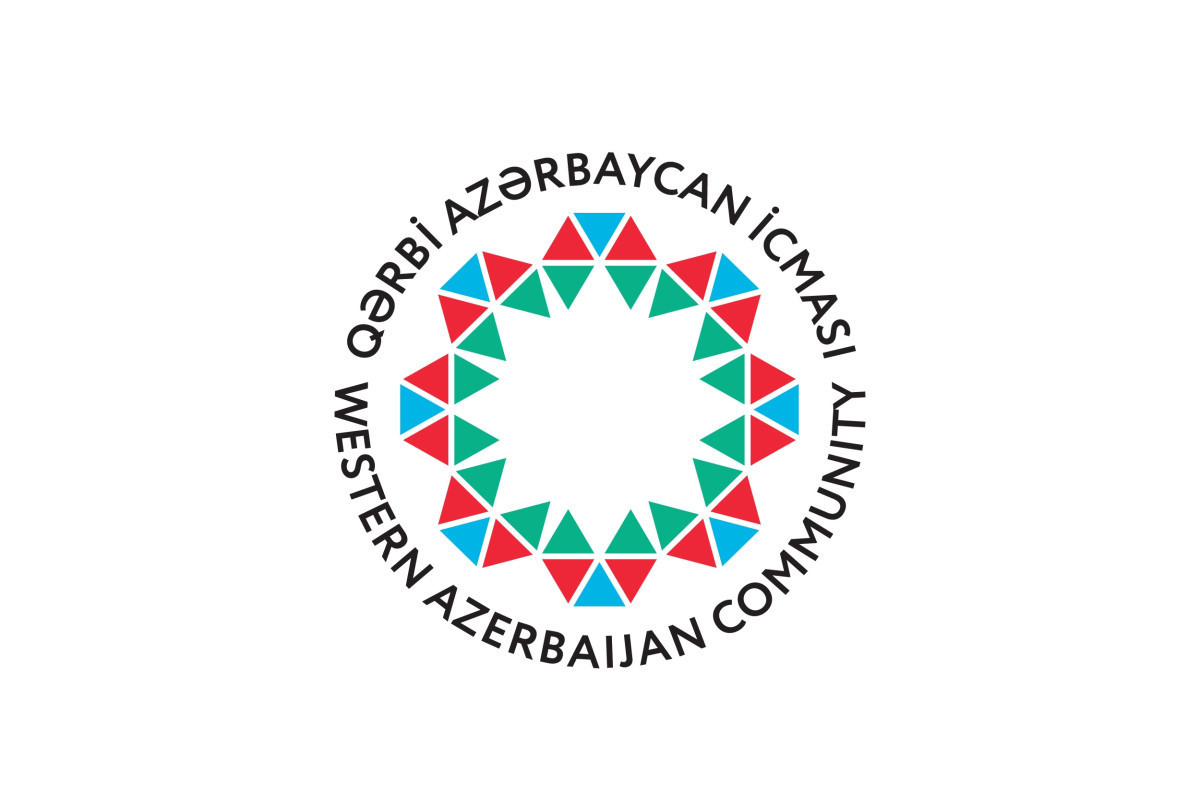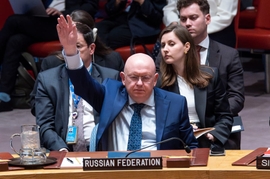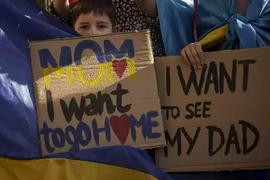The Western Azerbaijan Community (WAC) has urged Yerevan to ensure the reintegration of ethnic Azerbaijanis who were expelled from present-day Armenia.
This statement was made during a conference on Tuesday, which was dedicated to World Refugee Day and the issues faced by Azerbaijani refugees.
Aziz Alakbarli, the Chairman of the Community, stated that despite attempts at dialogue, the Armenian authorities are avoiding interaction to hinder the process.
“At the same time, the realization of our human rights-based goal depends on the political and practical support of the international community. We highly appreciate the relevant support,” Alakbarli said, according to the Azerbaijani media.
Meanwhile, on the same day, WAC issued a statement reaffirming its strong stance on seeking a peaceful return of deported Azerbaijanis to their homeland in present-day Armenia.
“Our demands for the peaceful return to our homes should not be misinterpreted or mispresented as being detrimental to the territorial integrity or sovereignty of Armenia. As the Government of Azerbaijan pledged and took actionable measures to reintegrate and ensure the rights of Armenian residents of the Karabakh region of Azerbaijan within its territorial integrity and sovereignty, the Government of Armenia must reciprocate by taking tangible steps to guarantee our rights and ensure our reintegration,” reads one of the statement’s paragraphs.
On Tuesday, the Parliamentary Assembly of the Council of Europe (PACE) published a written declaration submitted by WAC representative Kamal Jafarli as an official document. This declaration was signed by 31 PACE members representing three political groups from ten states, including Austria, Azerbaijan, Germany, Italy, Latvia, the Netherlands, Poland, Romania, Türkiye, and Ukraine.
Earlier, on June 12, the European Union officially responded to appeals from WAC, unequivocally expressing support for the right of all affected populations to return, while also acknowledging the significance of this issue within a broader peace process.
Furthermore, on June 13, WAC sent an appeal to His Holiness Pope Francis, requesting his support in restoring the rights of ethnic Azerbaijanis who once resided in present-day Armenia.
WAC is actively engaging with the United Nations High Commissioner for Refugees (UNHCR) as a key mediator in addressing the Community’s Concept of Return, which involves planning and executing repatriation, reintegration, rehabilitation, and reconstruction efforts.
WAC is an umbrella organization advocating for the rights of ethnic Azerbaijanis who were expelled from present-day Armenia.
The western edge of Azerbaijan historically encompassed lands that were initially settled by ethnic Azerbaijanis. However, these lands were included in destructive plans developed by the Russian imperial and Soviet authorities. The city of Iravan (modern-day Yerevan) and the Zangazur region were among the centers of Azerbaijani population and culture before their forcible separation from the Azerbaijan Democratic Republic (ADR) in 1918 and 1920, respectively.
Iravan was originally settled by ethnic Azerbaijanis after its establishment by their ancestors. Although Iravan was “willingly” handed over to the newly established Armenian state by the ADR government, historical sources claim that this act was organized and implemented forcibly under foreign pressure.
Zangazur is a historically Azerbaijani region that now forms the southern part of present-day Armenia as well as a portion of Azerbaijan’s territory.
During the 11th and 12th centuries, Zangazur was part of the Seljuk Empire, which further expanded Turkic-Islamic influence within the region. Subsequently, Zangazur faced invasions from Mongol-Tatar tribes and the Timurid Empire. From the 15th to the 18th century, the region was part of medieval Azerbaijani states, including Garagoyunlu, Aghgoyunlu, and Safavids.
Demographic changes occurred in Iravan and the Zangazur region during the rule of Tsarist Russia and the Soviet Union. Under the Russian Empire, a massive relocation of Armenians from Ottoman and Iranian territories to the South Caucasus, including Iravan, Zangazur, and other Azerbaijani territories, took place. Similar population transfers continued from 1904 to 1915, resulting in the relocation of over 260,000 ethnic Armenians to Azerbaijani territories. Protests against these actions were largely disregarded, and approximately 130,000 Armenians were relocated to Azerbaijani provinces such as Iravan and Yelizavetpol (now Ganja).
During the years of 1905-1907 and 1914-1921, Armenian armed groups committed massacres in Zangazur, resulting in the deaths of approximately half a million indigenous Azerbaijanis and other local Muslims. During this period, 115 Muslim villages in Zangazur were completely destroyed.
Iravan was ceded to the newly established Armenian Republic on May 29, 1918. Following the subjugation of the Azerbaijan Democratic Republic by Bolshevik forces on April 28, 1920, a significant part of the Zangazur region was also ceded to the Armenian Soviet Socialist Republic on November 30, 1920. These territorial annexations were facilitated by the Soviet Empire, which forced the Azerbaijani authorities to make concessions. Consequently, Nakhchivan became an exclave separated from the Azerbaijani mainland.
The annexation of Iravan had severe consequences for its indigenous Azerbaijani population and the cultural heritage of Azerbaijanis. In 1916, there were over 373,000 Azerbaijanis living in Iravan. However, according to census records from 1922, only 12,000 Azerbaijanis were registered.
In 1933, the territory of the Armenian SSR was divided into districts, and the name Zangazur was changed to new district names such as Gafan, Gorus, Garakilsa (Sisian), and Mehri.
The final phase of the “Armenianization” of Western Azerbaijan occurred in 1988 when over 300,000 ethnic Azerbaijanis were forcibly expelled from their ancestral lands. This expulsion was accompanied by anti-Azerbaijan sentiments, pogroms, and persecution of ethnic Azerbaijanis in Armenia. The underlying motive for this ethnic conflict was Armenia’s illegal territorial claims, particularly regarding the Karabakh region of Azerbaijan. The deportation of Azerbaijanis set the stage for Armenia’s full-scale military attack on Azerbaijan, leading to the First Karabakh War from 1991 to 1994 and the subsequent occupation of internationally recognized Azerbaijani territories.







 Azerbaijan and Armenia started the process of demarcation of their border on Tuesday, with the installation of the first border markers based on ge...
Azerbaijan and Armenia started the process of demarcation of their border on Tuesday, with the installation of the first border markers based on ge...
 Armenian sappers commenced on Monday mine-clearance operations in the territories adjacent to the Saint Mary Church in village of Voskepar (Armenia...
Armenian sappers commenced on Monday mine-clearance operations in the territories adjacent to the Saint Mary Church in village of Voskepar (Armenia...
 Iran and Pakistan have signed eight cooperation documents in various fields, and agreed to strengthen ties to fight terrorism in the region.
Iran and Pakistan have signed eight cooperation documents in various fields, and agreed to strengthen ties to fight terrorism in the region.
 As the conflict between Ukraine and Russia escalates, the strategic importance of Kharkiv, Ukraine's second-largest city, has come sharply into focus.
As the conflict between Ukraine and Russia escalates, the strategic importance of Kharkiv, Ukraine's second-largest city, has come sharply into focus.
 President Aliyev emphasized the critical role of the North-South Transport Corridor in fostering transport cooperation between Azerbaijan and Russi...
President Aliyev emphasized the critical role of the North-South Transport Corridor in fostering transport cooperation between Azerbaijan and Russi...



